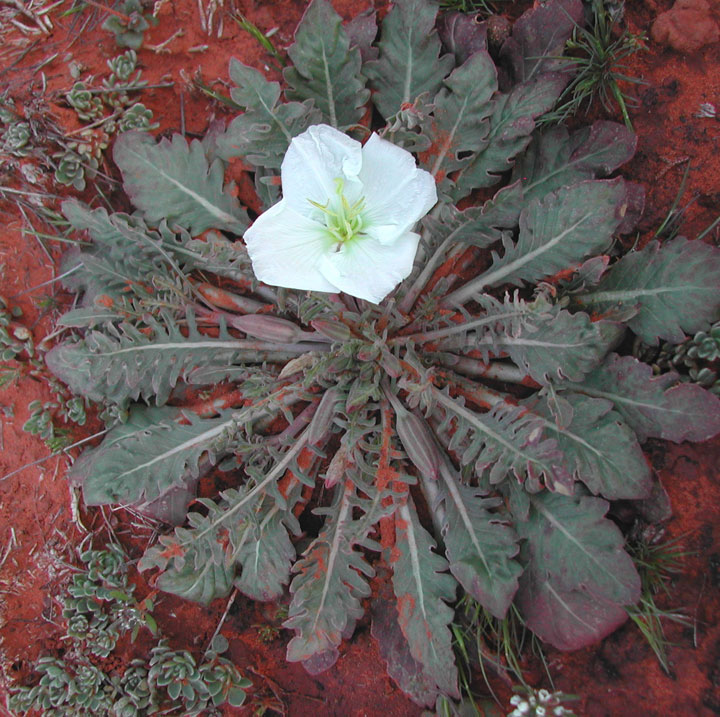Oenothera albicaulis
- Family: Onagraceae
- Common Name: whitest evening primrose
- Symbol: OEAL
- Description: Duration: Annual Nativity: Native Lifeform: Forb/Herb General: Annual herb, 5-30 cm tall, from a taproot; stems often several from the base of the plant, the central stem erect and often branching, and the lateral stems ascending or decumbent; stems white to pink, and sparsely covered with stiff hairs. Leaves: Alternate along the stems, and also in a basal rosette which often falls off prior to flowering; basal leaves spatulate, oblanceolate, or ovate, 5-10 cm long and 3-25 mm wide, with a smooth or toothed margin; stem leaves lanceolate to oblanceolate in outline, and usually pinnatifid into narrow lobes. Flowers: White, showy, and opening near sunset; solitary on often nodding stalks, up to 4 cm long, from the leaf axils; hypanthium (floral tube beneath the sepals and petals) 1-4 cm long; sepals 4 per flower, 1-3 cm long; petals 4 per flower, 1-4 cm long, white and fading to pink. Fruits: Capsule cylindric, 2-4 cm long, ribbed, and 4-chambered; splitting open along 4 suture lines to release many seeds, each 1 mm long. Ecology: Found in dry, open sites, usually sandy flats and slopes, from 2,500-7,500 ft (762-2286 m); flowers March-July. Distribution: AZ, east to TX and north to ND and MT, IL, NY; south to n MEX. Notes: This is generally a small, low plant, which can appear acaulescent (lacking a stem), but most often it has well-developed true stems with leaves attached to them. Distinguished by being an annual with white stems; with showy white 4-petaled evening primrose flowers that fade to a pinkish color; and stem leaves that are long and narrow, with the edges lined with small pinnatifid lobes. There is sometimes a persistant basal rosette of larger, often less strongly toothed leaves. Distinguish from Oe. cespitosa based on the flower, which has a shorter floral tube on this species (up to 3 cm long, vs. Oe. cespitosa with a floral tube 3-6 cm long) and the fact that this species is annual while Oe. cespitosa is perennial. SEINet Portal Network. 2020. http//:swbiodiversity.org/seinet/index.php. Accessed on November 02.
Additional Images
- There are no additional images for this species.
